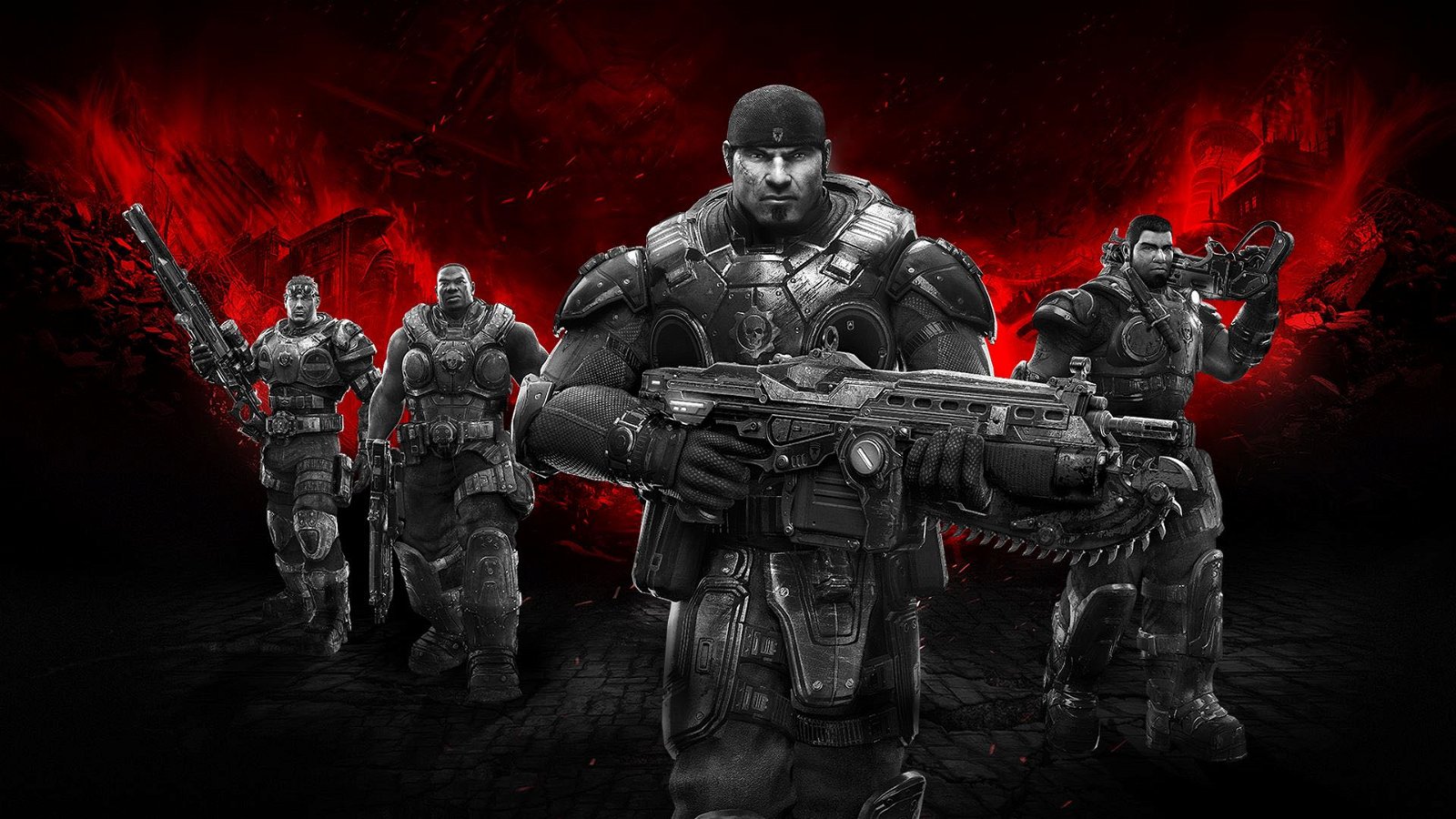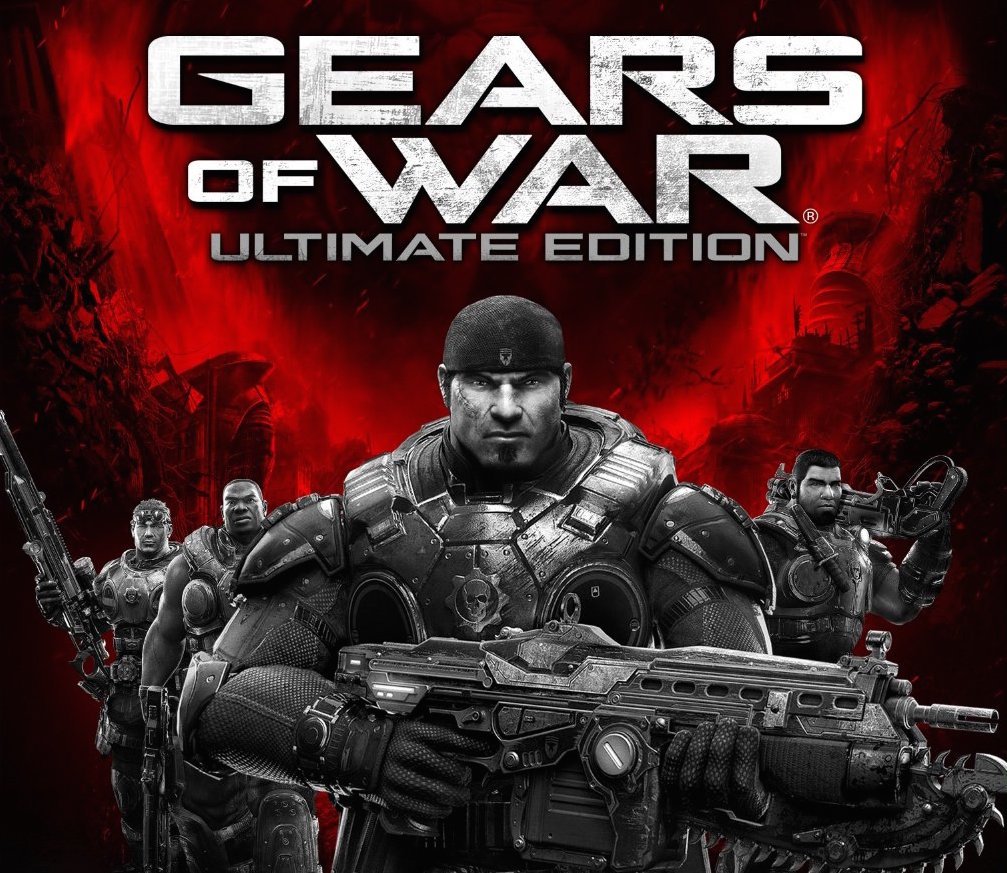How do you talk about Gears of War in 2016? In the decade that’s passed since the original Xbox 360 release, action games have been immeasurably influenced by Epic Games’ post-apocalyptic shooter. Trying to separate its impact on the medium from its successes as an individual game is difficult. But, with the release of The Coalition’s Gears of War: Ultimate Edition remaster, the player is asked to do just that. Luckily, stepping away from the baggage that accompanies one of the most popular and influential titles in videogames reveals an experience that is just as compelling now as it was when it first arrived in 2006.
Gears of War’s story, such as it is, follows Marcus Fenix and a group of Coalition of Ordered Governments (COG) soldiers in their attempt to fight back against the army of scaly Locust monsters who have devastated and occupied their country. The plot itself is fluff—a series of pretexts meant to provide context for new combat scenarios—but, despite this, Gears’ has a definite, memorable tone. Part of this is due to its aesthetic—beautiful stone collegiate buildings and European-style urban streets now crumbling after decades of war—but more comes from the way its characters are presented.
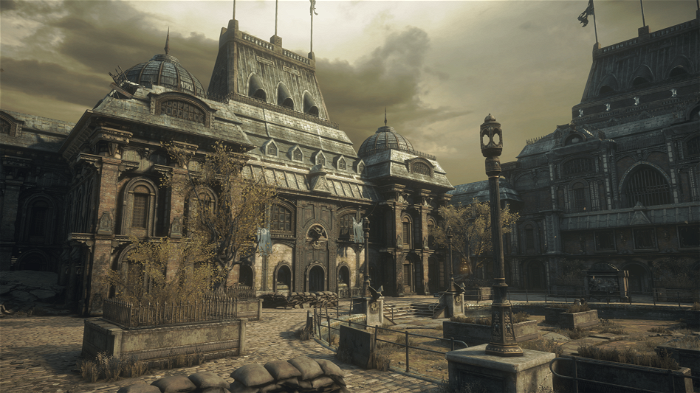
Marcus and the rest of his squad are all hyper-masculine, growling, bulging muscles, and tough-guy attitudes. They bark commands to one another during firefights, spout one-liners after escaping dire situations, and mutter gravel-throated commentary as they find new weapons or kick in locked doors. Gears of War’s vision of cool draws on football players, bodybuilders, wrestlers, and hard-nosed military men as its guiding principles. And, whether intentional or not, the end result is hilarious. The COGs are endlessly aggressive, ever hungry for another life-or-death scrape, and their attitude contrasts wonderfully against the backdrop of a world in complete ruin. As insufferable as they’d be in reality, there’s no better cast of characters suited to keeping the player determined (and entertained) on a tour through a dismal, decimated post-apocalypse.
The writing’s grim tone carries through to Gears’ still remarkable style of play, too. Despite the outward familiarity of Ultimate Edition’s control scheme and visual language (there are chest-high walls everywhere), it’s a surprisingly unique game. The squad bounds through levels like miniature elephants, the ground reverberating with the heavy steps of their metal boots as the player urges them onward to the next fight. And the unwieldy power of the characters extends to the way it feels to control their movement in combat.
Whether shooting, running, or chainsawing enemies, Gears’ action feels heavier—more deliberate—than most modern shooters. Unlike the consistent action of contemporary games, which encourages the player to improvise on the fly, scrabbling from cover to cover during firefights, Gears requires a greater degree of tactical thinking. If Fenix isn’t moved to a flanking position, he can easily be cut down by a hail of bullets. If he spends a few seconds too long standing exposed during combat, his health drains at a pace far quicker than what modern games have taught players to expect. The Locust enemies soak up bullets, their monstrous bodies refusing to drop as readily as the soldiers who constitute a military shooter’s enemy force. The acrobatic character movements that increase the speed of a Tomb Raider, Uncharted, or Call of Duty game are absent here, too. Marcus gathers momentum as he runs and he turns with sluggish, weighty motions. This design style is definitely deliberate—it brings the bulky look of the characters in line with the feel of the shooting—but it’s one of the few elements of the game that makes it feel as old as it is.
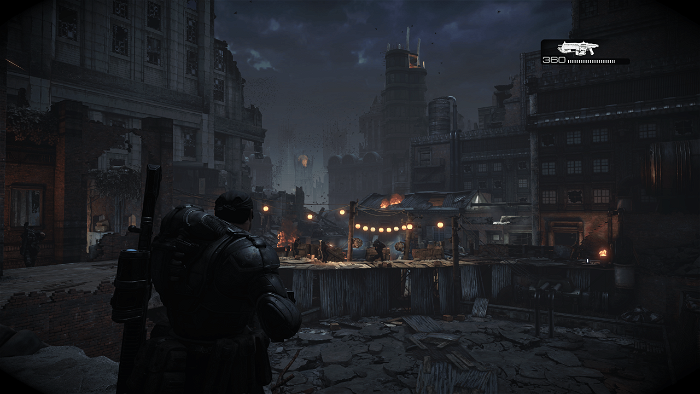

Character movement may be a bit clunky, but the level and combat design is outstanding, even in a modern context. Ultimate Edition’s visuals bring Gears in line with the graphical fidelity of recent videogames, making it easier to appreciate the original’s art direction. Modern rendering lends a greater scope to moments when the player looks out across wide swaths of ruined city streets, gazes up at an enormous mining facility, or races to a final confrontation as the sky above is filled with wisps of black smoke and flying creatures. The sound design, too, is still fantastic. From the thundering of the soldiers’ boots to the satisfying mechanical clack of a successfully timed reload, the audio heightens the sense of physicality that grounds the game’s action.
While Ultimate Edition’s audiovisual updates are welcome, none of them are as impressive as the design foundation they’re built upon. Epic Games’ ability to craft memorable combat encounters, placed within imaginatively constructed environments, is still worthy of praise. There’s a sequence where the squad must navigate city blocks at night, blowing up propane tanks and weathering shoot-outs while also moving from fire to fire in order to keep swarms of ravenous, light-fearing creatures at bay. There’s a level where the soldiers methodically clear a mansion of Locust, only to then have to defend it against an onslaught of reinforcements desperate to reclaim their lost territory. There’s the final stretch of the game, where the COGs fight their way to the front of a speeding train, defeating enemies from all sides as they inch their way forward through the cars.
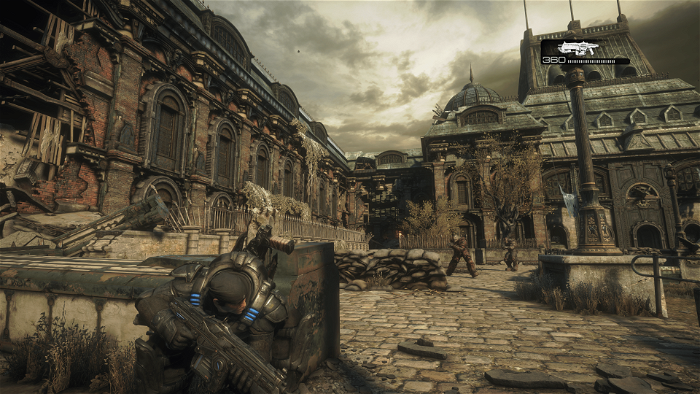
Probably the best thing that can be said for Ultimate Edition’s audiovisual update is that it makes it easier to appreciate just how strong Gears’ original design is. And, for the most part, the PC version performs very well. The same modes presented in 2015’s Xbox One release—the solo and co-operative campaign and a variety of multiplayer options—are intact and, on modest hardware (an i5-4670k and GTX 770), it’s possible to play on high settings with only minor slowdowns during particularly busy sequences. Unfortunately, there are a few glitches. A scripted event late in the game refused to activate until the latest save checkpoint had been reloaded several times; enemies sometimes stop moving, getting stuck behind objects in the environment; invisible walls occasionally popped up in a later level, too, causing Marcus to take cover against thin air. These are relatively minor problems, but still serve as blemishes on an otherwise great version of the game.
These issues aside, Ultimate Edition doesn’t represent a drastic change from the Xbox 360 original. It may look and sound much better, but the core experience is largely unchanged. For a remaster, this is exactly what players should hope for. Rather than fundamentally alter an excellent game that may feel slightly outdated to modern players, Gears of War: Ultimate Edition provides a simple upgrade, making an important piece of shooter history a bit prettier and more accessible to a 2016 audience.
